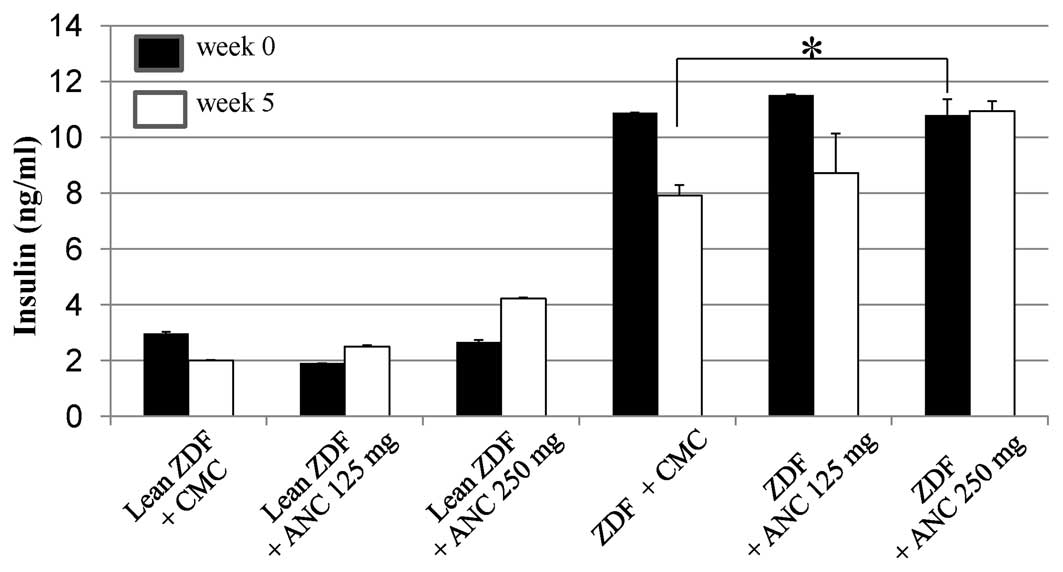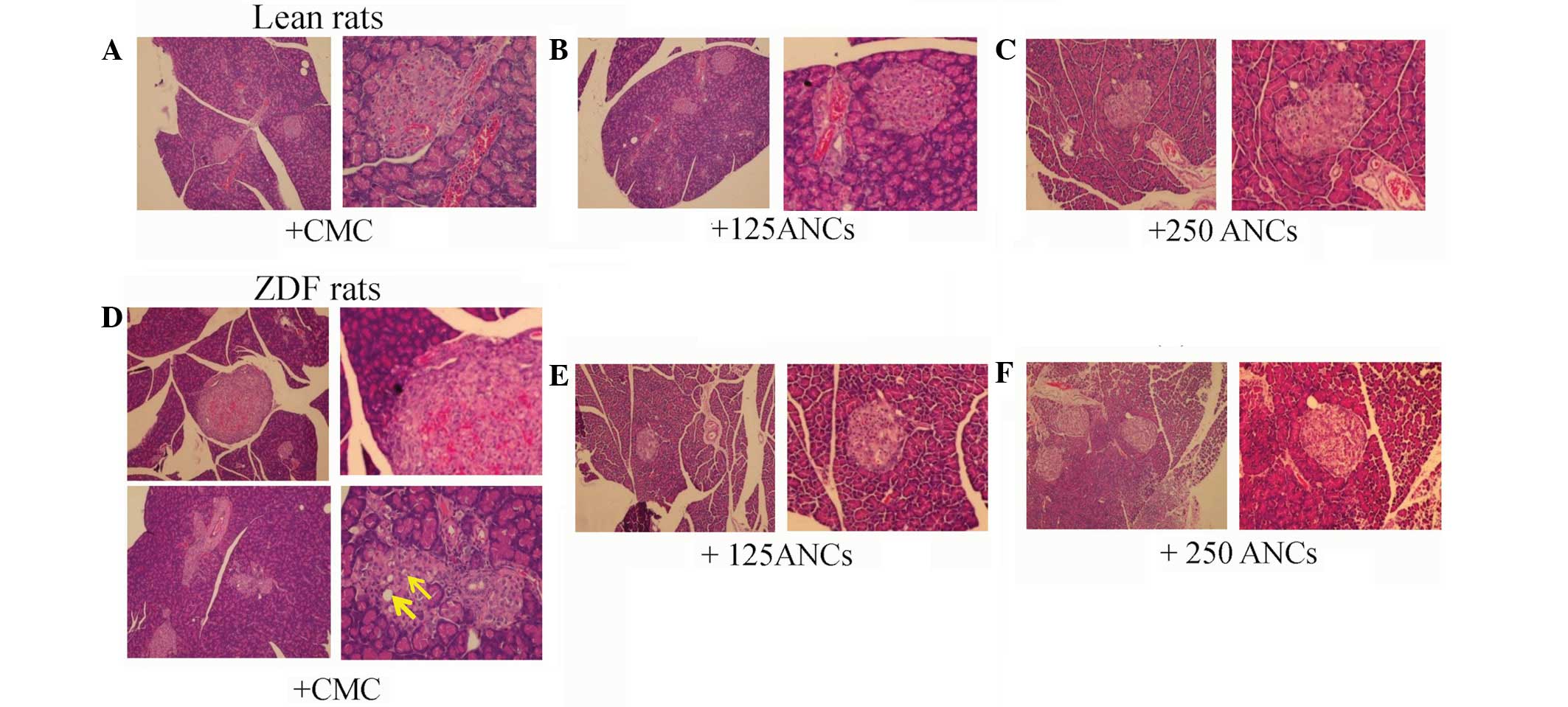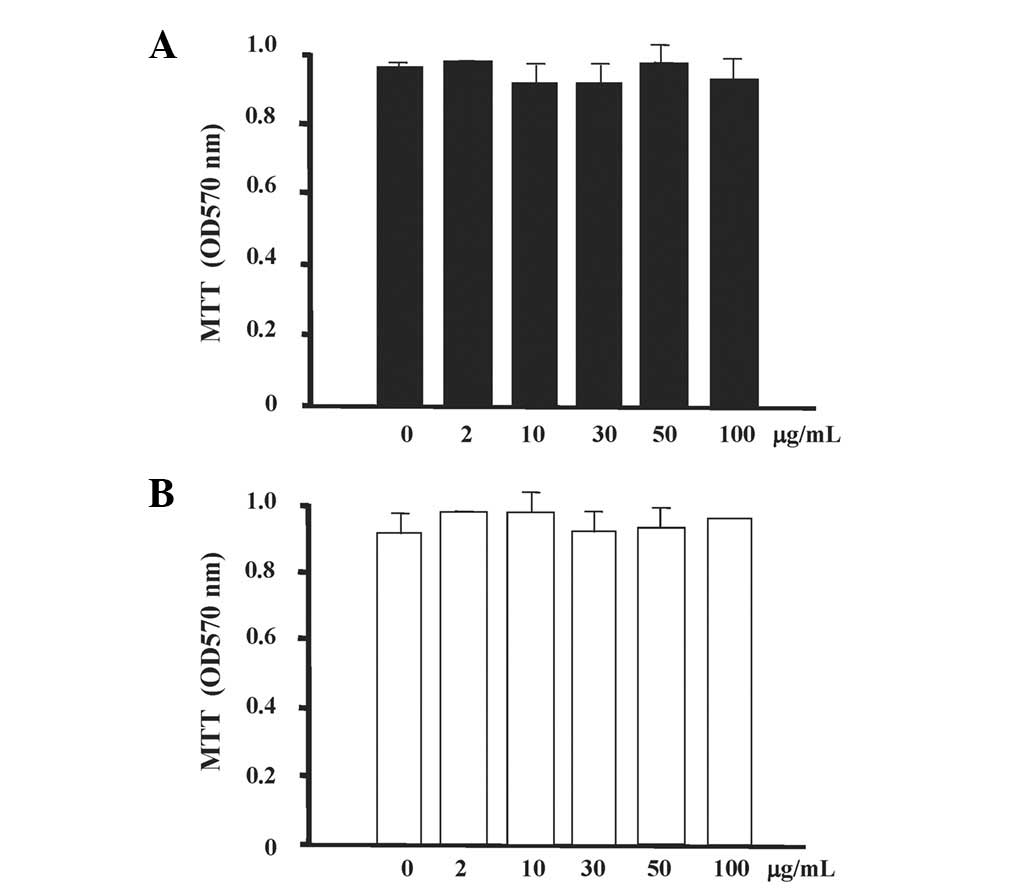|
1
|
Jun H, Bae HY, Lee BR, et al: Pathogenesis
of non-insulin-dependent (type II) diabetes mellitus (NIDDM) -
genetic predisposition and metabolic abnormalities. Adv Drug Deliv
Rev. 35:157–177. 1999. View Article : Google Scholar : PubMed/NCBI
|
|
2
|
Rosak C: The pathophysiologic basis of
efficacy and clinical experience with the new oral antidiabetic
agents. J Diabetes Complications. 16:123–132. 2002. View Article : Google Scholar : PubMed/NCBI
|
|
3
|
Jennings AM, Wilson RM and Ward JD:
Symptomatic hypoglycemia in NIDDM patients treated with oral
hypoglycemic agents. Diabetes Care. 12:203–208. 1989. View Article : Google Scholar : PubMed/NCBI
|
|
4
|
Xia X, Ling W, Ma J, et al: An
anthocyanin-rich extract from black rice enhances atherosclerotic
plaque stabilization in apolipoprotein E-deficient mice. J Nutr.
136:2220–2225. 2006.PubMed/NCBI
|
|
5
|
Wallace TC: Anthocyanins in cardiovascular
disease. Adv Nutr. 2:1–7. 2011. View Article : Google Scholar
|
|
6
|
Wang LS and Stoner GD: Anthocyanins and
their role in cancer prevention. Cancer Lett. 269:281–290. 2008.
View Article : Google Scholar : PubMed/NCBI
|
|
7
|
Grace MH, Ribnicky DM, Kuhn P, et al:
Hypoglycemic activity of a novel anthocyanin-rich formulation from
lowbush blueberry, Vaccinium angustifolium Aiton.
Phytomedicine. 16:406–415. 2009. View Article : Google Scholar : PubMed/NCBI
|
|
8
|
Jayaprakasam B, Vareed SK, Olson LK and
Nair MG: Insulin secretion by bioactive anthocyanins and
anthocyanidins present in fruits. J Agric Food Chem. 53:28–31.
2005. View Article : Google Scholar : PubMed/NCBI
|
|
9
|
Duthie G and Crozier A: Plant-derived
phenolic antioxidants. Curr Opin Clin Nutr Metab Care. 3:447–451.
2000. View Article : Google Scholar
|
|
10
|
Kaewkaen P, Tong-Un T, Wattanathorn J, et
al: Mulberry fruit extract protects against memory impairment and
hippocampal damage in animal model of vascular dementia. Evid Based
Complement Alternat Med. 2012:2635202012. View Article : Google Scholar : PubMed/NCBI
|
|
11
|
Andallu B, Kumar AV and Varadacharyulu NC:
Oxidative stress in streptozocin-diabetic rats: Amelioration by
mulberry (Morus Indica L.) leaves. Chin J Integr Med. Dec
22–2012.(Epub ahead of print).
|
|
12
|
Musabayane CT, Bwititi PT and Ojewole JA:
Effects of oral administration of some herbal extracts on food
consumption and blood glucose levels in normal and
streptozotocin-treated diabetic rats. Methods Find Exp Clin
Pharmacol. 28:223–228. 2006. View Article : Google Scholar : PubMed/NCBI
|
|
13
|
Du Q, Zheng J and Xu Y: Composition of
anthocyanins in mulberry and their antioxidant activity. J Food
Compost Anal. 21:390–395. 2008. View Article : Google Scholar
|
|
14
|
Peng CH, Liu LK, Chuang CM, Chyau CC,
Huang CN and Wang CJ: Mulberry water extracts possess an
anti-obesity effect and ability to inhibit hepatic lipogenesis and
promote lipolysis. J Agric Food Chem. 59:2663–2671. 2011.
View Article : Google Scholar : PubMed/NCBI
|
|
15
|
Chen PN, Chu SC, Chiou HL, Kuo WH, Chiang
CL and Hsieh YS: Mulberry anthocyanins, cyanidin 3-rutinoside and
cyanidin 3-glucoside, exhibited an inhibitory effect on the
migration and invasion of a human lung cancer cell line. Cancer
Lett. 235:248–259. 2006. View Article : Google Scholar : PubMed/NCBI
|
|
16
|
Ha US, Bae WJ, Kim SJ, et al: Protective
effect of cyanidin-3-O-β-D-glucopyranoside fraction from mulberry
fruit pigment against oxidative damage in streptozotocin-induced
diabetic rat bladder. Neurourol Urodyn. Nov 25–2012.(Epub ahead of
print).
|
|
17
|
Clark JB, Palmer CJ and Shaw WN: The
diabetic Zucker fatty rat. Proc Soc Exp Biol Med. 173:68–75. 1983.
View Article : Google Scholar
|
|
18
|
Mega C, de Lemos ET, Vala H, et al:
Diabetic nephropathy amelioration by a low-dose sitagliptin in an
animal model of type 2 diabetes (Zucker diabetic fatty rat). Exp
Diabetes Res. 2011:1620922011. View Article : Google Scholar : PubMed/NCBI
|
|
19
|
Yu X, Zhao M, Hu J, Zeng S and Bai X:
Correspondence analysis of antioxidant activity and UV-Vis
absorbance of Maillard reaction products as related to reactants.
LWT - Food Science and Technology. 46:1–9. 2012. View Article : Google Scholar
|
|
20
|
Zhang M, Chen H, Li J, Pei Y and Liang Y:
Antioxidant properties of tartary buckwheat extracts as affected by
different thermal processing methods. LWT - Food Science and
Technology. 43:181–185. 2010. View Article : Google Scholar
|
|
21
|
Sutharut J and Sudarat J: Total
anthocyanin content and antioxidant activity of germinated colored
rice. International Food Research Journal. 19:215–221. 2012.
|
|
22
|
Nizamutdinova IT, Jin YC, Chung JI, et al:
The anti-diabetic effect of anthocyanins in streptozotocin-induced
diabetic rats through glucose transporter 4 regulation and
prevention of insulin resistance and pancreatic apoptosis. Mol Nutr
Food Res. 53:1419–1429. 2009. View Article : Google Scholar : PubMed/NCBI
|
|
23
|
Qin C, Li Y, Niu W, Ding Y, Zhang R and
Shang X: Analysis and characterisation of anthocyanins in mulberry
fruit. Czech J Food Sci. 28:117–126. 2010.
|
|
24
|
Jones HB, Nugent D and Jenkins R:
Variation in characteristics of islets of Langerhans in
insulin-resistant, diabetic and non-diabetic-rat strains. Int J Exp
Pathol. 91:288–301. 2010. View Article : Google Scholar : PubMed/NCBI
|
|
25
|
Pick A, Clark J, Kubstrup C, Levisetti M,
Pugh W, Bonner-Weir S and Polonsky KS: Role of apoptosis in failure
of beta-cell mass compensation for insulin resistance and beta-cell
defects in the male Zucker diabetic fatty rat. Diabetes.
47:358–364. 1998. View Article : Google Scholar : PubMed/NCBI
|
|
26
|
Wei X, Wang D, Yang Y, et al:
Cyanidin-3-O-β-glucoside improves obesity and triglyceride
metabolism in KK-Ay mice by regulating lipoprotein lipase activity.
J Sci Food Agric. 91:1006–1013. 2011.
|
|
27
|
Inaguma T, Han J and Isoda H: Improvement
of insulin resistance by Cyanidin 3-glucoside, anthocyanin from
black beans through the up-regulation of GLUT4 gene expression. BMC
Proc. 5(Suppl 8): P212011. View Article : Google Scholar
|
|
28
|
Nizamutdinova IT, Jin YC, Chung JI, Shin
SC, Lee SJ, Seo HG, Lee JH, Chang KC and Kim HJ: The anti-diabetic
effect of anthocyanins in streptozotocin-induced diabetic rats
through glucose transporter 4 regulation and prevention of insulin
resistance and pancreatic apoptosis. Mol Nutr Food Res.
53:1419–1429. 2009. View Article : Google Scholar : PubMed/NCBI
|
|
29
|
Janssen SW, Hermus AR, Lange WP, et al:
Progressive histopathological changes in pancreatic islets of
Zucker Diabetic Fatty rats. Exp Clin Endocrinol Diabetes.
109:273–282. 2001. View Article : Google Scholar : PubMed/NCBI
|














